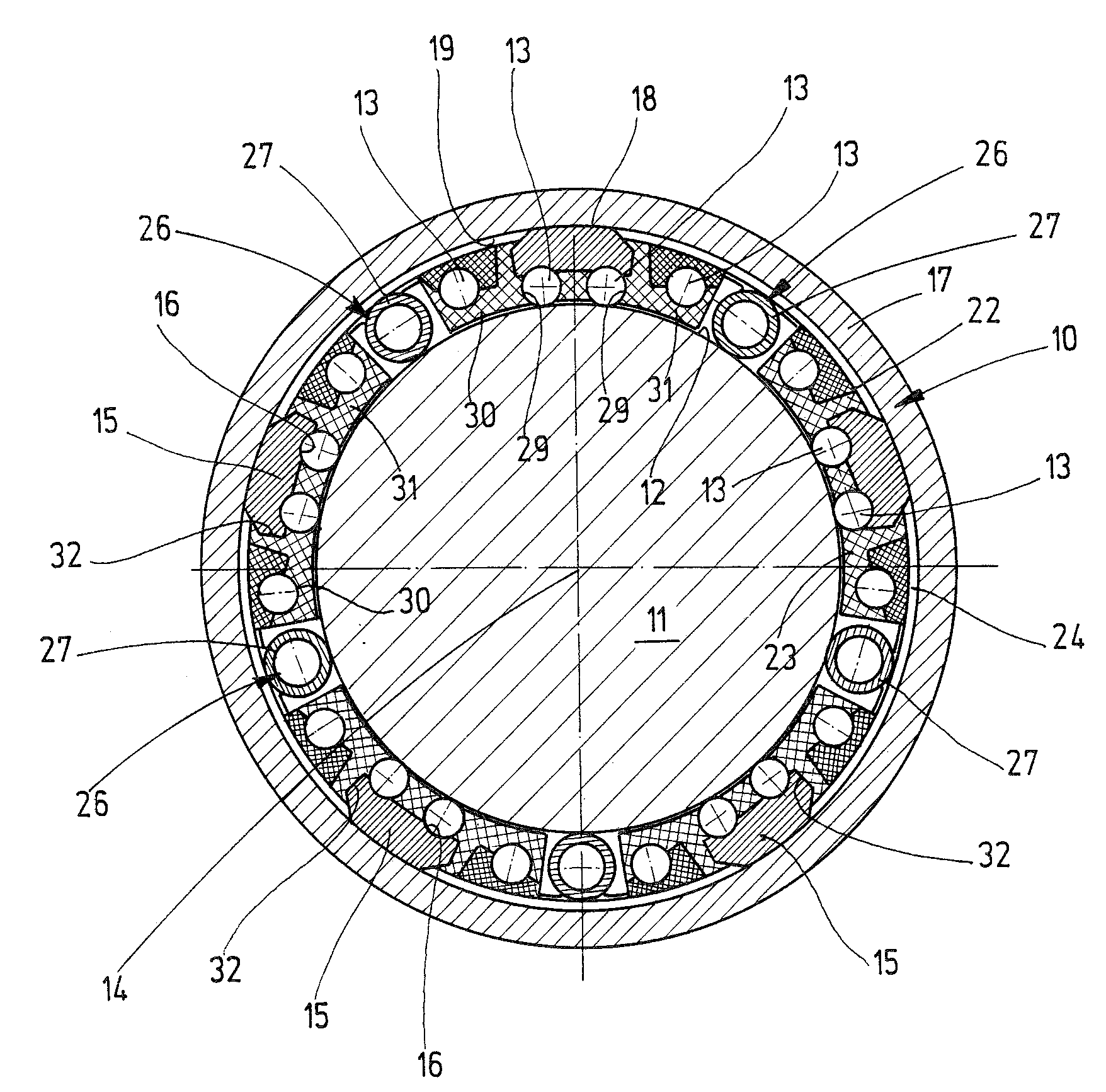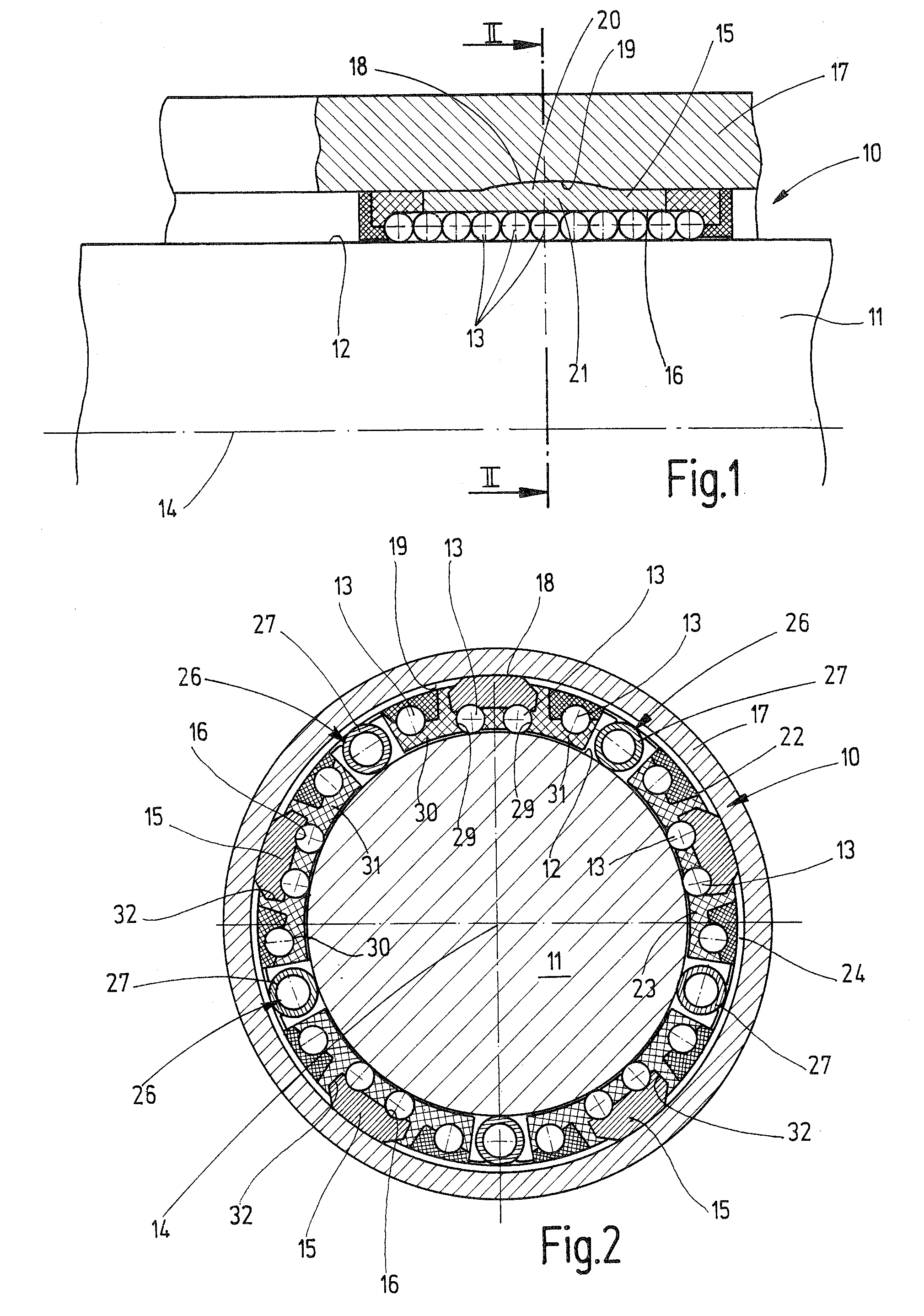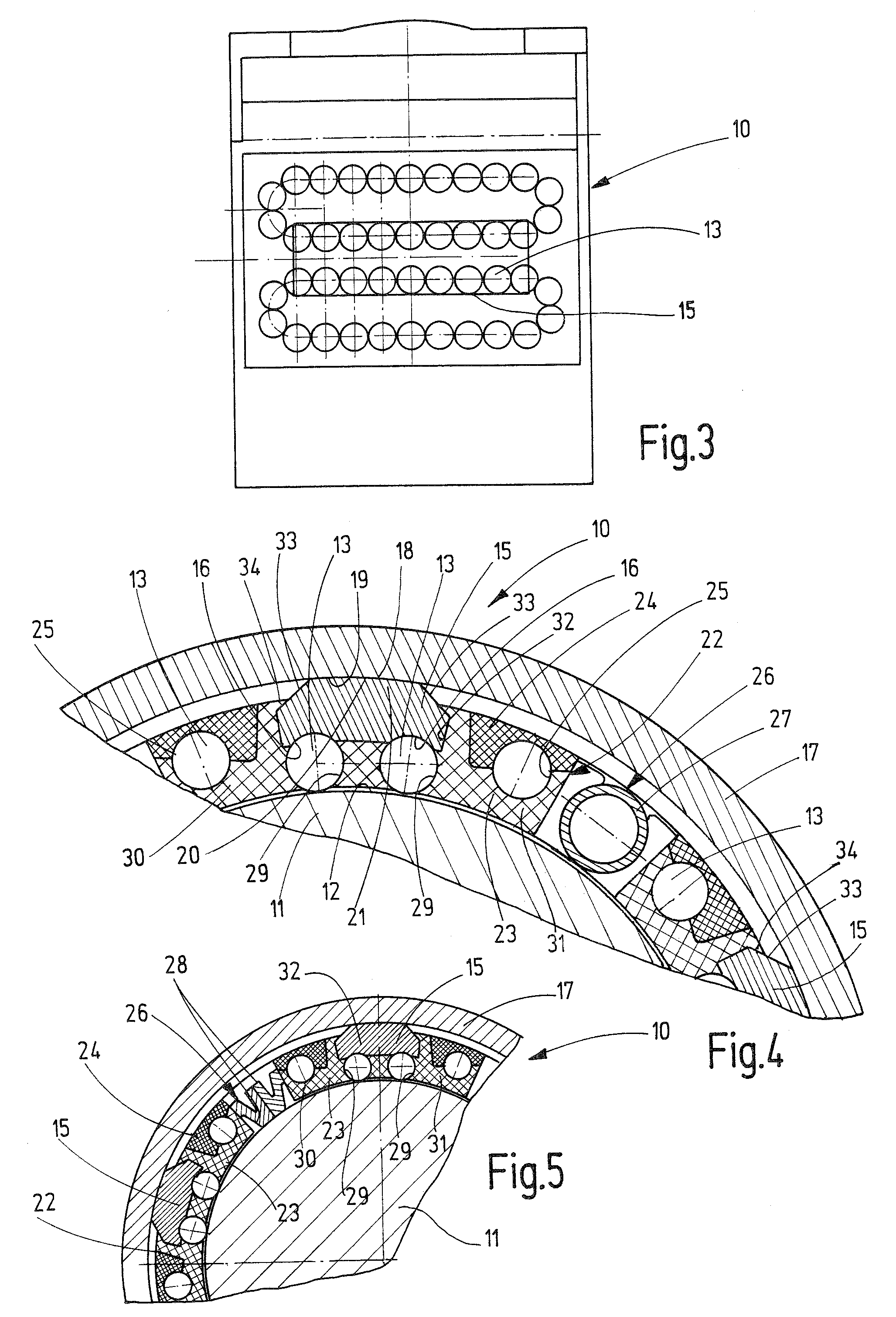Linear roller bearing
a technology of roller bearings and rollers, applied in the direction of sliding contact bearings, linear bearings, bearings, etc., can solve the problems of shortened service life, increased local pressure, and inability to adjust the raceway elements
- Summary
- Abstract
- Description
- Claims
- Application Information
AI Technical Summary
Benefits of technology
Problems solved by technology
Method used
Image
Examples
Embodiment Construction
[0026]FIGS. 1 through 4 are schematic depictions of a linear roller bearing 10 according to a first exemplary embodiment, which is located on a profile 11 in the form of a shaft in this case. This profile has a circular cross section in this case, although it may have a different cross section. On its outer surface 12, profile 11 includes raceways for rolling elements 13 of linear roller bearing 10. Rolling elements 13 may have diverse designs. Advantageously, they are composed, e.g., of balls or cylindrical rollers or barrel-shaped rollers, or the like. Rolling elements 13 are located in individual rows of rolling elements, which extend essentially parallel to the longitudinally-extending central axis 14 of bearing 10 and to each other, and are distributed around a circle, as viewed in the cross section in FIG. 2. Raceway elements 15 are assigned to these rows of rolling elements—provided they are load-bearing rolling elements 13—each of which includes carrier raceway 16 of at leas...
PUM
 Login to View More
Login to View More Abstract
Description
Claims
Application Information
 Login to View More
Login to View More - R&D
- Intellectual Property
- Life Sciences
- Materials
- Tech Scout
- Unparalleled Data Quality
- Higher Quality Content
- 60% Fewer Hallucinations
Browse by: Latest US Patents, China's latest patents, Technical Efficacy Thesaurus, Application Domain, Technology Topic, Popular Technical Reports.
© 2025 PatSnap. All rights reserved.Legal|Privacy policy|Modern Slavery Act Transparency Statement|Sitemap|About US| Contact US: help@patsnap.com



